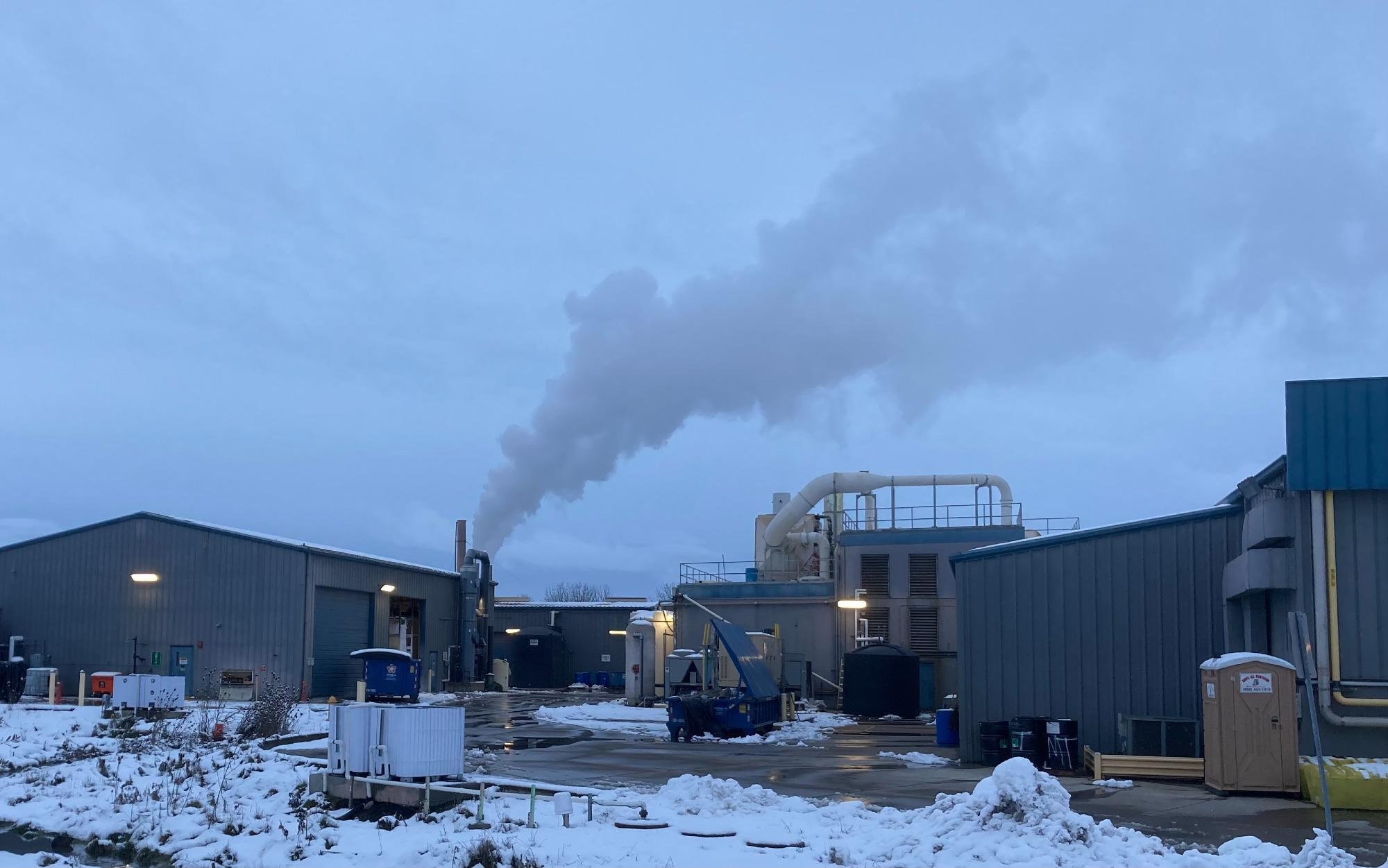A scientific collaboration led by a researcher at Oregon State University resulted in the development of a new compound that can harvest carbon dioxide from smokestacks and use it to produce commercially beneficial chemicals.
 Selmet Inc. Image Credit: Oregon State University.
Selmet Inc. Image Credit: Oregon State University.
The study demonstrates that the new metal-organic framework, loaded with a general industrial chemical known as propylene oxide, has the potential to catalyze the production of cyclic carbonates while CO2 is being scrubbed from factory flue gases.
The study has been published in the Journal of Materials Chemistry A.
Carbon dioxide, a greenhouse gas that is caused by the burning of fossil fuels, is known to be one of the major reasons for climate change. Cyclic carbonates are considered to be a class of compounds having great industrial interest.
This implies the findings are a boost for green-economy initiatives since they exhibit useful applications like pharmaceutical precursors and battery electrolytes that could be derived from the same process dispensed to clean emissions from manufacturing facilities.
The latest, three-dimensional, lanthanide-based metal-organic framework (MOF) could also be utilized to catalyze cyclic carbonate production from biogas — a mix of methane, carbon dioxide and other gases emerging from the decomposition of organic matter.
A catalyst is defined as a substance that tends to raise the speed of a chemical reaction without experiencing any permanent chemical change, and lanthanides are known to be a group of soft and silvery-white metals whose applications range from night vision goggles to cigarette lighters’ flints.
Examples of lanthanides comprise gadolinium, europium and cerium.
We’ve taken a big step toward solving a crucial challenge associated with the hoped-for circular carbon economy by developing an effective catalyst. A key to that is understanding the molecular interactions between the active sites in MOFs with potentially reactive molecules.
Kyriakos Stylianou, Study Lead Author and Chemistry Researcher, College of Science, Oregon State University
A MOF is an inorganic-organic hybrid, a crystalline porous material composed of positively charged metal ions encircled by the so-called organic “linker” molecules. Here, tetracarboxylate linkers and lanthanide metals are being used.
The metal ions create nodes that exhibit the potential to bind the linkers’ arms to develop a repeating structure that looks somewhat similar to a cage. The structure consists of nanosized pores that adsorb gases, identical to a sponge. MOFs could be designed with a range of components, which decide the properties of MOFs.
Normally, lanthanide-based materials are stable due to the comparatively large size of lanthanide ions. Stylianou feels that is true as well with lanthanide MOFs, where the acidic metals develop powerful bonds with the linkers, retaining the stability of MOFs in water and at high temperatures. This is significant since biogas and flue gases are hot as well as moisture-rich.
Also, the lanthanide MOFs are known to be selective for carbon dioxide, implying they are not bothered by the existence of the other gases contained by biogas and industrial emissions.
We observed that within the pores, propylene oxide can directly bind to the cerium centers and activate interactions for the cycloaddition of carbon dioxide. Using our MOFs, stable after multiple cycles of carbon dioxide capture and conversion, we describe the fixation of carbon dioxide into the propylene oxide’s epoxy ring for the production of cyclic carbonates.
Kyriakos Stylianou, Study Lead Author and Chemistry Researcher, College of Science, Oregon State University
Cyclic carbonates consist of a wide range of industrial applications, such as being polar solvents, precursors for polycarbonate materials like digital discs and eyeglass lenses, precursors for pharmaceuticals and electrolytes in lithium batteries.
These are very exciting findings. And being able to directly use carbon dioxide from impure sources saves the cost and energy of separating it before it can be used to make cyclic carbonates, which will be a boon for the green economy.
Kyriakos Stylianou, Study Lead Author and Chemistry Researcher, College of Science, Oregon State University
David Le, Ryan Loughran and Isabelle Brooks of the College of Science collaborated on this study, along with researchers from the University of Cambridge and Columbia University.
The study was financially supported by the College of Science and the OSU Honors College.
Journal Reference:
Le, D. H., et al. (2021) Lanthanide metal–organic frameworks for the fixation of CO2 under aqueous-rich and mixed-gas conditions. Journal of Materials Chemistry A. doi.org/10.1039/D1TA09463G.